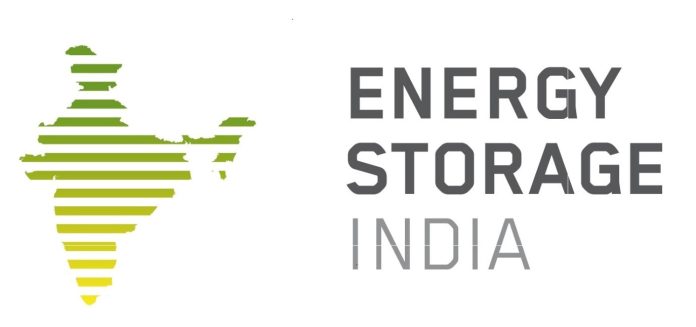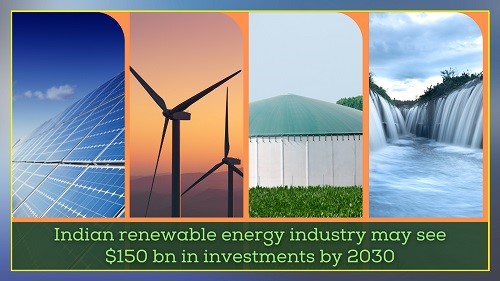The vision under which the GOI is approaching to meet its energy targets includes a number of goals and strategies. By 2030 India has set up a mile stone to adopt 50% energy for its mobility drive. Along with that India has made policies for long-term economic success which includes a net zero carbon dependence by 2070. The vision also includes to develop India into a vibrant society that will drive a thriving economy to be an ambitious nation.
2030 targets
India is on its way to achieve 500 GW energy from non-fossil fuel sources by 2030 under the campaign for renewable energy classified as “Panchamrit”. Gradually India’s growth has been terrific and result oriented. India is at the 4th position in renewable energy installed capacity (including Large Hydro), and is standing on the 4th position in wind power capacity & in the race of developed nation it is on the 4th spot in solar power capacity globally (According to REN21 renewables 2022 Global Status Report). According to reports India has steadily increased its renewable energy capacity by 396% in the last 8.5 years and at current it stands at more than 174.53 GW which is about 42.5% of the country’s total capacity (as recorded in Feb 2023). As a result, India went through a drastic shift of 9.83% year-on-year growth in 2022.
Industry Scenario
The energy storage industry in India is at a nascent stage but has the potential to become a major industry in this decade. The government is promoting the development and adoption of energy storage technologies. Accounting till Feb 2023, India has achieved a combined installed capacity of 174.53 GW from its renewable energy sources including hydropower. Below mentioned is the data of India’s renewable sources capacity
- Wind Power: 41.9 GW
- Solar Power: 63.3 GW
- Biomass/cogeneration: 10.2 GW
- Small Hydro Power: 4.93 GW
- Waste To Energy: 0.52 GW
- Large Hydro: 46.85 GW
Additionally, the Indian government had target projections for the year 2030 under which the growth drivers are mentioned below:
- Government Commitments
India is all set to reduce its carbon emissions by one billion tonnes by 2030. GOI is setting up new schemes to reduce the carbon intensity of the nation’s economy by 45%.
- Proposed Solar Cities and Parks
The GOI has proposed to setup 59 solar parks of 40 GW across the nation.
- National Green Hydrogen Mission
Towards the cause, GOI have initiated outlay of INR 19,744 crore for this mission including an outlay of INR 17,490 crore for the SIGHT programme, INR 1,466 crore for pilot projects, INR 400 crore for R&D, and INR 388 crore towards mission components.
- Atmanirbhar Bharat
GOI has introduced a PLI scheme under which there are financial outlays of INR 24,000 crore that has been approved for manufacturing of Solar PV.
- Off-shore Wind Energy
The GOI has made projection of 30 GW by 2030 for medium- and long-term targets of Off-shore wind power capacity.
In addition to government support, the energy storage industry in India is seeing increased interest from the private sector. Several companies, such as Tata Power and Fortum, have announced plans to invest in energy storage technology. Additionally, several startups have emerged in the energy storage space, such as Sun Mobility and Bijli, which are working to develop innovative energy storage solutions.
Overall, the energy storage industry in India is expected to grow significantly in this decade. With the right policies in place and increased private sector investment, the industry could become a major driver of India’s economic growth.
Energy Storage Trends
To overlay the undergoing rapid transformations, GOI is coming with lasting solutions in the manufacturing, and service of renewable energy industry. To classify the economic power system operation trends, we have categorised them in three concepts:
- Moving away from the traditional approach
- Developing storage systems that can scale the large geographical areas
- Transitioning from centralized to distributed energy storage.
Broadly, the current trends of energy storage solutions in India are:
Short Term Response Energy Storage Devices
Short-term response energy storage (STRES) devices are gaining popularity in India as a cost-effective solution for balancing intermittent renewable energy sources. These devices can store electricity for a few seconds to minutes and release it back into the grid when needed to maintain a reliable and stable supply of electricity.
STRES devices are becoming increasingly popular in India due to their ability to reduce grid congestion and balance intermittent renewable energy sources. The most popular STRES devices used in India are flywheel energy storage systems, lithium-ion batteries, and compressed air energy storage systems. Flywheel energy storage systems are well-suited for short-term energy storage due to their low cost and high efficiency. Lithium-ion batteries are becoming increasingly popular due to their long-life, high-energy density, and low maintenance requirements. Compressed air energy storage systems are also gaining popularity in India due to their low cost and low environmental impact.
In addition to these devices, other forms of STRES such as pumped-hydro storage, thermal energy storage, and electrochemical storage are also being used in India. These technologies are being used to provide support to the grid and enable the integration of renewable energy sources.
Advanced Thermal Energy Storage
India is making significant strides in the field of thermal energy storage. The country has established a number of thermal energy storage projects, such as the Narmada Thermal Energy Storage Plant in Gujarat, the Kolar Thermal Energy Storage Plant in Karnataka, and the Ramagundam Thermal Energy Storage Plant in Andhra Pradesh. These projects are designed to store energy generated during periods of low demand and to use it during peak periods. This helps reduce electricity costs, minimize the need for additional power generation capacity, and improve power supply reliability.
In addition, India is investing in research and development of advanced thermal energy storage technologies. This includes the development of phase-change materials such as paraffin wax, which can store and release large amounts of energy in a reversible fashion. India is also exploring the use of molten salt technology for thermal energy storage.
Finally, India has embarked on several projects like Indian Institute of Science’s Solar Thermal Energy Storage Facility. These initiatives are expected to help India meet its growing electricity demands.
Enhanced Redox Flow Battery
Redox flow batteries are an advanced form of energy storage technology. Redox flow batteries are a type of electrochemical cell that has two tanks of electrolyte solution, which consist of a mix of two or more ions. When electricity is applied to the cell, the ions move from one tank to the other, creating a flow of electric current. This type of battery has advantages over traditional batteries, such as a longer life span, higher energy density, and lower cost. In India, redox flow batteries are being piloted for grid-level energy storage applications, such as providing backup power for remote villages, providing energy during grid outages, and enabling the integration of renewable energy sources into the grid. The Indian government has shown support for this technology and has taken steps to promote its deployment.
Energy transition and decarbonization drive
The Indian government has taken several steps towards transitioning to a low-carbon economy. At the COP 26 India raised a memoranda to commit towards the aggressive climate change under which India will be installing 500 GW of non-fossil fuel energy. It has also mentioned that India will be sourcing its 50% energy requirements from the renewables by 2030 and by 2070 whole economy will be achieving net zero. Another agenda it encompasses is that country’s mobility drive will include 30% Electric Vehicles by 2030 which is 1% at the present moment. An avalanche of net savings of USD 26.7 to 33.3 billion dollars on the oil imports. The market is addressing the penetration of energy storage with a compound annual growth rate of 44.5%. Whereas, the major contributors are the EV segment with 64%, followed by grid-level applications with 22%, behind-the-meter usage with 8%, and consumer electronics with 6%.
Evolution of ESS
In the past few year GOI policies have escalated the capacity manifold and the local ecosystem. The latest standalone Energy Storage System technologies are the next major advancements in the power sector that has evolved with times. The national ESS policies have been important growth drivers that has significantly addressed the major impediments faced by the domestic industry, with a time-based target. The integration of these comprehensive policies and the new business models have evolved the energy storage systems in India creating future-proof products available in the domestic market. The union budget of the fiscal-year 2023 has addressed such concerns and have spared a dedicated infrastructure for the advancements in energy storage. Below mentioned are the highlights:
- Identified Green Growth as one of the nodes in the SAPTARISHI (A list of 7 priorities)
- Investment of $2.4 Billion for National Hydrogen Mission for the production of 5 MMT by 2030 and adding a budget of $36 million additionally.
- An initiative Visibility Gap Funding led by GOI that will support the 4GWh battery energy storage systems
- Established $1.02/2.5 billion central sector support for ISTS infrastructure in Ladakh to get 13 GW energy.
Conclusion
The GOI have been inventive and enthusiastic towards adoption of green and clear energy. Past few years have been tough for India but the year 2023 had a great start. As recorded in Feb 2023 India’s renewable energy capacity have increased by 396% in the last 8.5 years and talking of current scenario, India is producing more than 174.53 GW which is about 42.5% of the country’s total capacity.
The write-up is authored by Neeraj Kumar Singal. Founder and CEO of Semco Group. He is passionate about Clean Energy and working on various projects to build a robust Lithium-ion ecosystem. One of his ventures, SEMCO Infratech is a solution provider of Lithium-ion cell manufacturing and pack assembly equipment. He can be reached at nks@semcoindia.com












